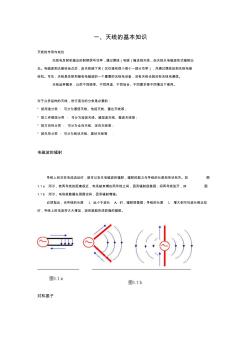Contents
1 Introduction 1
1.1 Book objective 1
1.2 Wireless systems 2
1.3 Book outline 5
2 The wireless channel 10
2.1 Physical modeling for wireless channels 10
2.1.1 Free space, fixed transmit and receive antennas 12
2.1.2 Free space, moving antenna 13
2.1.3 Reflecting wall, fixed antenna 14
2.1.4 Reflecting wall, moving antenna 16
2.1.5 Reflection from a ground plane 17
2.1.6 Power decay with distance and shadowing 18
2.1.7 Moving antenna, multiple reflectors 19
2.2 Input/output model of the wireless channel 20
2.2.1 The wireless channel as a linear time-varying system 20
2.2.2 Baseband equivalent model 22
2.2.3 A discrete-time baseband model 25
Discussion 2.1 Degrees of freedom 28
2.2.4 Additive white noise 29
2.3 Time and frequency coherence 30
2.3.1 Doppler spread and coherence time 30
2.3.2 Delay spread and coherence bandwidth 31
2.4 Statistical channel models 34
2.4.1 Modeling philosophy 34
2.4.2 Rayleigh and Rician fading 36
2.4.3 Tap gain auto-correlation function 37
Example 2.1 Clarke’s model 38
Chapter 2 The main plot 40
2.5 Bibliographical notes 42
2.6 Exercises 42
3 Point-to-point communication: detection, diversity, and channel ncertainty 49
3.1 Detection in a Rayleigh fading channel 50
3.1.1 Non-coherent detection 50
3.1.2 Coherent detection 52
3.1.3 From BPSK to QPSK: exploiting the degrees of freedom 56
3.1.4 Diversity 59
3.2 Time diversity 60
3.2.1 Repetition coding 60
3.2.2 Beyond repetition coding 64
Summary 3.1 Time diversity code design criterion 68
Example 3.1 Time diversity in GSM 69
3.3 Antenna diversity 71
3.3.1 Receive diversity 71
3.3.2 Transmit diversity: space-time codes 73
3.3.3 MIMO: a 2×2 example 77
Summary 3.2 2×2 MIMO schemes 82
3.4 Frequency diversity 83
3.4.1 Basic concept 83
3.4.2 Single-carrier with ISI equalization 84
3.4.3 Direct-sequence spread-spectrum 91
3.4.4 Orthogonal frequency division multiplexing 95
Summary 3.3 Communication over frequency-selective channels 101
3.5 Impact of channel uncertainty 102
3.5.1 Non-coherent detection for DS spread-spectrum 103
3.5.2 Channel estimation 105
3.5.3 Other diversity scenarios 107
Chapter 3 The main plot 109
3.6 Bibliographical notes 110
4 Cellular systems: multiple access and interference management 120
4.1 Introduction 120
4.2 Narrowband cellular systems 123
4.2.1 Narrowband allocations: GSM system 124
4.2.2 Impact on network and system design 126
4.2.3 Impact on frequency reuse 127
Summary 4.1 Narrowband systems 128
4.3 Wideband systems: CDMA 128
4.3.1 CDMA uplink 131
4.3.2 CDMA downlink 145
4.3.3 System issues 147
Summary 4.2 CDMA 147
4.4 Wideband systems: OFDM 148
4.4.1 Allocation design principles 148
4.4.2 Hopping pattern 150
4.4.3 Signal characteristics and receiver design 152
4.4.4 Sectorization 153
Example 4.1 Flash-OFDM 153
Chapter 4 The main plot 154
4.5 Bibliographical notes 155
4.6 Exercises 155
5 Capacity of wireless channels 166
5.1 AWGN channel capacity 167
5.1.1 Repetition coding 167
5.1.2 Packing spheres 168
Discussion 5.1 Capacity-achieving AWGN channel codes 170
Summary 5.1 Reliable rate of communication and capacity 171
5.2 Resources of the AWGN channel 172
5.2.1 Continuous-time AWGN channel 172
5.2.2 Power and bandwidth 173
Example 5.2 Bandwidth reuse in cellular systems 175
5.3 Linear time-invariant Gaussian channels 179
5.3.1 Single input multiple output (SIMO) channel 179
5.3.2 Multiple input single output (MISO) channel 179
5.3.3 Frequency-selective channel 181
5.4 Capacity of fading channels 186
5.4.1 Slow fading channel 187
5.4.2 Receive diversity 189
5.4.3 Transmit diversity 191
Summary 5.2 Transmit and receive diversity 195
5.4.4 Time and frequency diversity 195
Summary 5.3 Outage for parallel channels 199
5.4.5 Fast fading channel 199
5.4.6 Transmitter side information 203
Example 5.3 Rate adaptation in IS-856 209
5.4.7 Frequency-selective fading channels 213
5.4.8 Summary: a shift in point of view 213
Chapter 5 The main plot 214
5.5 Bibliographical notes 217
5.6 Exercises 217
6 Multiuser capacity and opportunistic communication 228
6.1 Uplink AWGN channel 229
6.1.1 Capacity via successive interference cancellation 229
6.1.2 Comparison with conventional CDMA 232
6.1.3 Comparison with orthogonal multiple access 232
6.1.4 General K -user uplink capacity 234
6.2 Downlink AWGN channel 235
6.2.1 Symmetric case: two capacity-achieving schemes 236
6.2.2 General case: superposition coding achieves capacity 238
Summary 6.1 Uplink and downlink AWGN capacity 240
Discussion 6.1 SIC: implementation issues 241
6.3 Uplink fading channel 243
6.3.1 Slow fading channel 243
6.3.2 Fast fading channel 245
6.3.3 Full channel side information 247
Summary 6.2 Uplink fading channel 250
6.4 Downlink fading channel 250
6.4.1 Channel side information at receiver only 250
6.4.2 Full channel side information 251
6.5 Frequency-selective fading channels 252
6.6 Multiuser diversity 253
6.6.1 Multiuser diversity gain 253
6.6.2 Multiuser versus classical diversity 256
6.7 Multiuser diversity: system aspects 256
6.7.1 Fair scheduling and multiuser diversity 258
6.7.2 Channel prediction and feedback 262
6.7.3 Opportunistic beamforming using dumb antennas 263
6.7.4 Multiuser diversity in multicell systems 270
6.7.5 A system view 272
Chapter 6 The main plot 275
6.8 Bibliographical notes 277
6.9 Exercises 278
7 MIMO I: spatial multiplexing and channel modeling 290
7.1 Multiplexing capability of deterministic MIMO channels 291
7.1.1 Capacity via singular value decomposition 291
7.1.2 Rank and condition number 294
7.2 Physical modeling of MIMO channels 295
7.2.1 Line-of-sight SIMO channel 296
7.2.2 Line-of-sight MISO channel 298
7.2.3 Antenna arrays with only a line-of-sight path 299
7.2.4 Geographically separated antennas 300
7.2.5 Line-of-sight plus one reflected path 306
Summary 7.1 Multiplexing capability of MIMO channels 309
7.3 Modeling of MIMO fading channels 309
7.3.1 Basic approach 309
7.3.2 MIMO multipath channel 311
7.3.3 Angular domain representation of signals 311
7.3.4 Angular domain representation of MIMO channels 315
7.3.5 Statistical modeling in the angular domain 317
7.3.6 Degrees of freedom and diversity 318
Example 7.1 Degrees of freedom in clustered response models 319
7.3.7 Dependency on antenna spacing 323
7.3.8 I.i.d.Rayleigh fading model 327
Chapter 7 The main plot 328
7.4 Bibliographical notes 329
7.5 Exercises 330
8 MIMO II: capacity and multiplexing architectures 332
8.1 The V-BLAST architecture 333
8.2 Fast fading MIMO channel 335
8.2.1 Capacity with CSI at receiver 336
8.2.2 Performance gains 338
8.2.3 Full CSI 346
Summary 8.1 Performance gains in a MIMO channel 348
8.3 Receiver architectures 348
8.3.1 Linear decorrelator 349
8.3.2 Successive cancellation 355
8.3.3 Linear MMSE receiver 356
8.3.4 Information theoretic optimality 362
Discussion 8.1 Connections with CDMA multiuser detection and ISI equalization 364
8.4 Slow fading MIMO channel 366
8.5 D-BLAST: an outage-optimal architecture 368
8.5.1 Suboptimality of V-BLAST 368
8.5.2 Coding across transmit antennas: D-BLAST 371
8.5.3 Discussion 372
Chapter 8 The main plot 373
8.6 Bibliographical notes 374
8.7 Exercises 374
9 MIMO III: diversity–multiplexing tradeoff and universal space-time codes 383
9.1 Diversity–multiplexing tradeoff 384
9.1.1 Formulation 384
9.1.2 Scalar Rayleigh channel 386
9.1.3 Parallel Rayleigh channel 390
9.1.4 MISO Rayleigh channel 391
9.1.5 2×2 MIMO Rayleigh channel 392
9.1.6 nt×nr MIMO i.i.d.Rayleigh channel 395
9.2 Universal code design for optimal diversity-multiplexing tradeoff 398
9.2.1 QAM is approximately universal for scalar channels 398
Summary 9.1 Approximate universality 400
9.2.2 Universal code design for parallel channels 400
Summary 9.2 Universal codes for the parallel channel 406
9.2.3 Universal code design for MISO channels 407
Summary 9.3 Universal codes for the MISO channel 410
9.2.4 Universal code design for MIMO channels 411
Discussion 9.1 Universal codes in the downlink 415
Chapter 9 The main plot 415
9.3 Bibliographical notes 416
9.4 Exercises 417
10 MIMO IV: multiuser communication 425
10.1 Uplink with multiple receive antennas 426
10.1.1 Space-division multiple access 426
10.1.2 SDMA capacity region 428
10.1.3 System implications 431
Summary 10.1 SDMA and orthogonal multiple access 432
10.1.4 Slow fading 433
10.1.5 Fast fading 436
10.1.6 Multiuser diversity revisited 439
Summary 10.2 Opportunistic communication and multiple receive antennas 442
10.2 MIMO uplink 442
10.2.1 SDMA with multiple transmit antennas 442
10.2.2 System implications 444
10.2.3 Fast fading 446
10.3 Downlink with multiple transmit antennas 448
10.3.1 Degrees of freedom in the downlink 448
10.3.2 Uplink–downlink duality and transmit beamforming 449
10.3.3 Precoding for interference known at transmitter 454
10.3.4 Precoding for the downlink 465
10.3.5 Fast fading 468
10.4 MIMO downlink 471
10.5 Multiple antennas in cellular networks: a system view 473
Summary 10.3 System implications of multiple antennas on multiple access 473
10.5.1 Inter-cell interference management 474
10.5.2 Uplink with multiple receive antennas 476
10.5.3 MIMO uplink 478
10.5.4 Downlink with multiple receive antennas 479
10.5.5 Downlink with multiple transmit antennas 479
Example 10.1 SDMA in ArrayComm systems 479
Chapter 10 The main plot 481
10.6 Bibliographical notes 482
10.7 Exercises 483
Appendix A Detection and estimation in additive Gaussian noise 496
Appendix B Information theory from first principles 516
References 546
Index 554

 无线通信基础知识
无线通信基础知识

 英文版外贸合同(中英文对照版)
英文版外贸合同(中英文对照版)